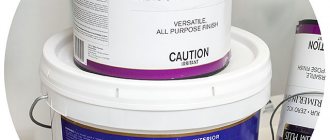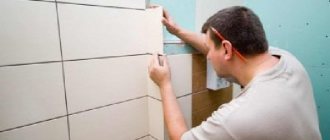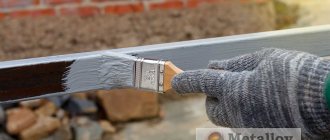Internal and external wall decoration is an integral part of renovation work. It can be rough or finishing. One of the elements of the first is plastering the surface of the walls. This is not an easy task that takes a lot of time and effort. Moreover, it cannot be accomplished without certain dexterity and skills. To make your task easier, a robotic plasterer can be used. What is this device and how does it function? This will be discussed in the article.
What a miracle
The principle by which the robotic plasterer is assembled and operates is not very complicated. Most often, a robot plasterer is a small rectangular or square base on supports. With the help of several motors, it can move up and down. While moving, the plaster mixture is simultaneously applied and leveled. To achieve this effect, there is a special plate in front that looks like a large spatula. The plastering solution can be loaded directly onto the screed plate or into a container located behind it. The robot plasterer does not have a module that would mix the solution, so it will have to be prepared manually. There is nothing complicated in using a robot plasterer, but it is better to work in pairs, since moving it around the site on your own is quite difficult. The work of one of the robots can be seen in the video below.
Advice! Before using the robot plasterer, it is necessary to ensure a suitable power supply line. The cross-section of the wires must correspond to the declared power of the plasterer robot.
[edit] Difference from plastering stations
The basic principle of operation of conventional plastering stations (mobile, stationary and mini) is essentially spraying a plaster mixture onto the wall from a hose. After this, the plaster mixture, as with manual work, has to be leveled. In essence, the main benefit of plastering stations is to reduce the amount of physical labor of workers, since the plaster mixture weighs a lot, and manually throwing on the required amount of mixture, for example, for an entire wall becomes a completely non-trivial task (20 m2 of wall is about a ton of plaster mixture). The operating principle of plastering stations was described back in the 30s in the magazine Popular Mechanics. Unlike common plastering stations, the robot plasterer does not spray the mixture onto the wall, but applies it using a lift, a conveyor belt and a rule with two vibrators. As a rule, the robot plasterer has a hopper into which the mixture is applied in the required volume for one strip. Then, when the machine is lifted, the plaster is fed along a conveyor belt to the wall and leveled with a metal sheet (rule) to which vibrators are attached. After the machine has risen to the required height, the rule turns at the opposite angle, the conveyor belt stops, and the robot plasterer moves down along the guides, leveling the plaster it has applied on the wall.
How to use
Before use, it is necessary to prepare the vertical and horizontal surfaces. The wall is treated with a primer, all recesses in it are sealed and concrete sagging, if any, is knocked down. If necessary, a reinforcing mesh is installed. If there are no obstacles, then two support bars are fixed along which the robot plasterer will move. They must be placed at the width of the plank and leveled. After this, the main working part of the robot plasterer is installed on them. In order for the guides to hold this module, they must be firmly attached to both the floor and the ceiling. For these purposes, a hydraulic or threaded expansion mechanism is used.
After fixing, you can test run the module up and down. Next, the finished mortar is prepared and loaded into the robot plasterer. The thickness of the applied plaster is pre-selected and a gap is made from the working part to the wall. It is important to control this gap throughout the work so that the layer is uniform. After each movement of the device, you will have to use a reference bar, which will allow you to set the required distance. The robot plasterer has to shift according to the width of its grip, and it is important to be precise so that there is no gap left between the layers, although you can seal them yourself without much effort. A description of the design of the Stau robot can be found below.
[edit] Device design
The robot plasterer consists of two main parts, these are: The frame of the machine with two guide metal beams that rest against the ceiling, along which the machine moves up and down. The machine itself, which also consists of several main parts: An electric motor that allows you to lift the body of the machine to the ceiling on a metal cable, lower it down, and spin the conveyor belt. • Hydraulic lift - it serves to ensure that the beams on which the machine rides up and down are firmly pressed against the ceiling and the machine does not warp (the machine itself with the mixture weighs more than 100 kg). • A hopper with a conveyor belt (not in all models), into which the mixture is placed, and a belt along which the mixture is subsequently fed to the rule. • Rule unit with a metal sheet on which the supplied mixture is distributed on the wall. The rule is rotated at the required angle depending on the mode of applying the mixture to the wall or leveling the already applied mixture on the wall. Two asynchronous motors are attached to the rule to create vibration, which allows you to better compact the mixture supplied to the rule and level the mixture along the wall. Also, on both sides of the rule there are metal stops for the applied mixture, so that the strip of applied plaster is even along the edges. The machine itself stands on 4 wheels, which allows the operator to move the machine alone.
Application nuances
Using a robot plasterer has its positive and negative sides. It is worth saying that with the widespread introduction of such robots, there will be a gradual replacement of the workforce and there will only be a need to control the device. Among the advantages of the product are:
- working with various solutions;
- reducing the cost of work;
- an even layer on any section of the wall;
- quick payback of the unit;
- ease of use by inexperienced operators;
- increased productivity.
The robot plasterer supports working with various solutions. For some models, the usual cement-sand mixture is problematic. This is especially true for plastering stations, which involve supplying the solution under pressure. The total cost of work is reduced due to the number of people on staff. But this is not the only reason, because plastering can be done by one person. It's all about speed. Some devices can handle an area of 500 m2 in one shift. Such volumes are only possible for large teams. An experienced operator can assemble and configure a construction robot in less than an hour.
Note! A quick payback for the device is only possible if there are sufficient and constant volumes. Otherwise, there is no point in purchasing such a robot.
There are also disadvantages to using such a tool. These include:
- work on flights of stairs;
- limited wall height;
- significant weight;
- need for maintenance;
There are practically no restrictions on the configuration of the wall for a person. But this cannot be said for the unit. He is unable to cope with plastering on flights of stairs. It is not possible to mount the support legs at different heights. The processing height is also limited depending on which model is used. Most often this indicator is at the level of 5 meters. For a higher wall height, it would be necessary to redesign the guides, increasing them in size and design. It is not possible to provide crossbars that would serve as additional spacers. The weight of the unit can be significant, which can create inconvenience not only during transportation, but also when lifting the product to the required height. You will have to spend additional money on servicing the device, as well as hire a specialist or deal with the mechanism yourself.
[edit] Plaster mixture used by the robot
The standard model is designed to work with cement-sand mixture, although the ability to work with gypsum mixture is stated in the machine description. In fact, working with a gypsum mixture is technologically more difficult than with a sand mixture, requiring more precise adjustment of the machine, and, what is important, more even walls with a certain preparation of these walls for plastering. Naturally, the operator must have better machine skills and experience in plastering than ordinary workers. The fact that the basic model is capable of working with gypsum mixture is proven by the presence of a number of videos posted on the Internet in the public domain. However, there are a number of cases where the machine was modified to accommodate the gypsum mixture by the operators who worked with it. In general, no specific composition of the mixture is required for the operation of the plastering plant, and everything, as with ordinary manual work, depends on the conditions at the construction site itself. Typically, this is the topography of the wall itself and what the wall is made of.
Cost of work
With good skill, one worker can easily cope with an area of 50 square meters. The figure is taken for one working day at 8 hours. If we talk about a robot, then in an equivalent period it can ideally process up to 750 square meters. If you take away the time for rearranging and setting up, then the volume remains in the range of 350 - 500 square meters. It turns out that one robot can easily replace a team of 8 people. In one month, one person will be able to plaster an area of 1200 square meters, and a robot – 12 thousand square meters.
If we convert the area into monetary units, then if we assume that for one square of plastering a worker takes up to 5 dollars, then in a month he can earn 6 thousand dollars. This is ideal if you do not take breaks and do not prepare the solution yourself. Under the same conditions, the robot can earn 60 thousand dollars. It is worth taking into account the cost of two operators, which can amount to up to 2.5 thousand dollars for each, so the final figure will be equal to 55 thousand dollars. The cost of one robot can be 5 thousand dollars, so it pays for itself quite quickly.
Note! The cost of the work is approximate and depends on the area where it is carried out.
Performance and Cost
In terms of performance, the robot is several times superior to a human, as noted earlier. For example, a well-trained specialist can plaster approximately 50 sq.m. in one work shift (8 working hours).
Of course, this figure is not a constant for everyone - some do more, some do less. The average robot is capable of processing about 750 square meters. If you take into account the time for its constant preparation and the time for its movement, you can get about 350 sq. m.
Performance largely depends on operators
Higher in the advantages is the point about payback. Indeed, if we take into account the information about productivity, we find that in one working month the machine is capable of processing about 7,000 sq.m.
If we consider that plastering work is estimated at $5-10 per unit area, then the total income is $35,000. Let us subtract the salaries of two workers from it and get approximately 30,000 net income.
As for the cost of the robot itself, it varies and depends on many factors. We just need to say that the average price is approximately $5,000.
This means that with constant load, the unit pays for itself already in the second week of use.
[edit] Robot plasterer installation and configuration
The robot plasterer kit includes the machine itself, a separate set of beams along which the machine rises and falls (from which you can build the required height to rest against the ceiling). The kit also includes several metal sticks that are attached to the machine in a certain way in order to align the machine with the wall and thus fix the angle of application of the mixture to the wall. This allows you to quickly move the machine to the next lane without placing “beacons” on the wall, without which it is quite difficult to plaster the wall evenly when doing manual work. The robot itself is not required to be configured; it is enough to align it with the wall once.











